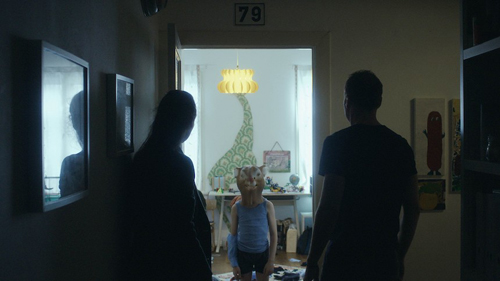
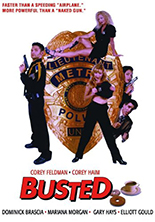 Words you never wanted to see grouped in such an order, “directed by Corey Feldman,” adorn Busted, the thankfully lone such endeavor from the former Goonie. It aims — repeat: aims — to be a Naked Gun-style parody of cop movies, but comes off as being made by people who have never seen a comedy and know the genre only through eavesdropping. Perhaps Feldman himself sensed this, which explains Busted‘s double-barreled categorization as a spoof and a Skinemax entry. Jokes and boobs: Only one requires skill — well, post-scalpel.
Words you never wanted to see grouped in such an order, “directed by Corey Feldman,” adorn Busted, the thankfully lone such endeavor from the former Goonie. It aims — repeat: aims — to be a Naked Gun-style parody of cop movies, but comes off as being made by people who have never seen a comedy and know the genre only through eavesdropping. Perhaps Feldman himself sensed this, which explains Busted‘s double-barreled categorization as a spoof and a Skinemax entry. Jokes and boobs: Only one requires skill — well, post-scalpel.
Police Academy: Mission to Moscow, I hereby rescind every negative word I’ve sent your way.
Not content with calling the shots, Feldman also stars as a zany cop in a precinct of nothing but. Even zanier, to bring crime off the streets, his crew brings it into the station; pantyhose-faced purse snatchers roam the halls freely, while one jail cell is transformed into a bordello. The strategy is not unlike the “Hamsterdam” season of TV’s brilliant The Wire, and let that be the only time the two shall be tied. (Let this serve as my proactive public apology to David Simon.)
Story stops at setup: With a Peeping Tom on the loose — not to mention bank robbers and a bikini-clad woman crossing streets while holding a giant letter “J” (ugh) — the mayor (Rance Howard, Ticks) assigns a stern lady captain (Mariana Morgan, Exit to Eden) to keep the cops under control or else. Her hair bun is wound so tightly, you just know it’s going to be unfurled toward the end, revealing her as Total Hottie. (However, Feldman does not telegraph he then will violently remove all fabric in order to expose her breasts.)
With a reason to exist out of the way, it’s one unfunny joke after another, each increasing in flatness. They’re so poorly written, you can predict the punchline immediately upon hearing idioms like “show her the ropes” and “by the book.” To be fair, such gags come straight from the Zucker/Abrahams/Zucker style, but it really is all in the delivery. For example, a police sketch of a stick figure can be funny under the proper circumstances, like as a quick cutaway; you don’t pass it around to every other character in a crowded shot to individually display and comment upon further. Your movie may be dirt-stupid, but viewers are not. (Okay, most viewers.)
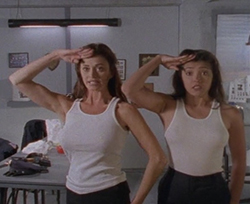 In an extended boxing match, Feldman referees; for some reason, that requires him to pop one eye, turn his mouth diagonal and talk out one side of it, in an accent approximating … I dunno, Burgess Meredith? He does this not just for a line, which might be acceptable, but the entire scene. It’s painful viewing — more painful than a looped, slow-motion clip of Gage getting an up-close look at a semi in 1989’s Pet Sematary.
In an extended boxing match, Feldman referees; for some reason, that requires him to pop one eye, turn his mouth diagonal and talk out one side of it, in an accent approximating … I dunno, Burgess Meredith? He does this not just for a line, which might be acceptable, but the entire scene. It’s painful viewing — more painful than a looped, slow-motion clip of Gage getting an up-close look at a semi in 1989’s Pet Sematary.
Another set piece finds Feldman wrestling a live gun from porn star Ron Jeremy. Who knows, that could be based on something the two did at a party in the Valley, and Feldman thought it’d be a hoot to throw in. If so, that’s more effort than he expended on masking the rag covering his genitals in a shower threesome (none) or where the top of the precinct’s set ends (also none).
Among other cameos, Julie Strain is on hand long enough to drop her towel; Todd Bridges, to remind you he’s still alive; and Elliott Gould, to embarrass his family and threaten his legacy. Corey Haim is also present, but only for a few random scenes. That’s because he reportedly walked upon learning his “friend” Feldman also had hired Haim’s alleged molester, Dominick Brascia (Friday the 13th Part V: A New Beginning).
Inadvertent or not, the one thing Busted does right is giving 1990s T&A royalty Monique Parent, Ava Fabian and Griffin Drew the rare opportunity to flex muscles beyond just the ones required to unhook their bras. They get to flex comedic muscles, too, even if that means fellating butter-rubbed corn on the cob. —Rod Lott

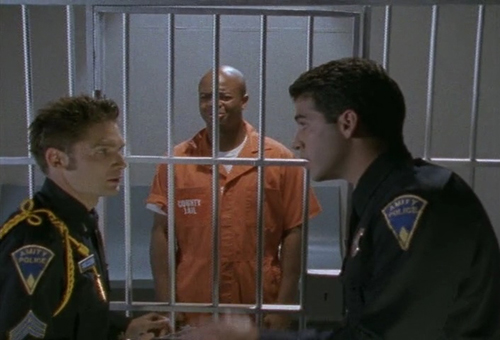


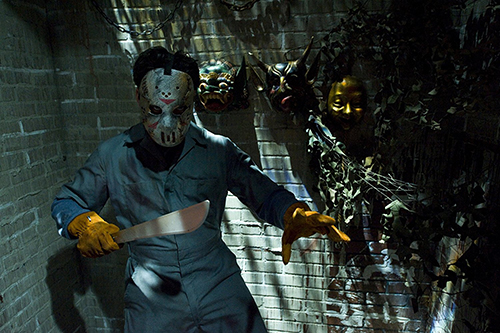

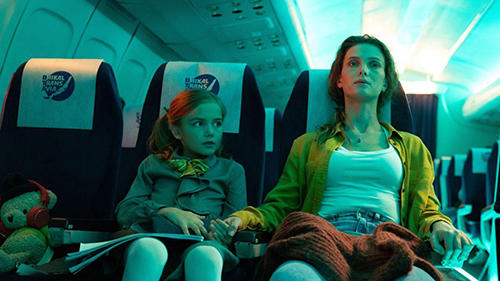

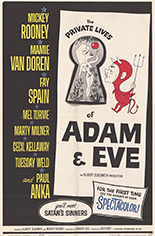


 Some weekends are made for a getaway; Jan and Nina soon wish they had just picked another. Mere minutes after the married ad execs arrive at their second home with their two children, their idyllic escape is the site of a home invasion.
Some weekends are made for a getaway; Jan and Nina soon wish they had just picked another. Mere minutes after the married ad execs arrive at their second home with their two children, their idyllic escape is the site of a home invasion. 